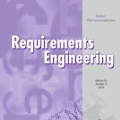[Context] Engineering Artificial Intelligence (AI) software is a relatively new area with many challenges, unknowns, and limited proven best practices. Big companies such as Google, Microsoft, and Apple have provided a suite of recent guidelines to assist engineering teams in building human-centered AI systems. [Objective] The practices currently adopted by practitioners for developing such systems, especially during Requirements Engineering (RE), are little studied and reported to date. [Method] This paper presents the results of a survey conducted to understand current industry practices in RE for AI (RE4AI) and to determine which key human-centered AI guidelines should be followed. Our survey is based on mapping existing industrial guidelines, best practices, and efforts in the literature. [Results] We surveyed 29 professionals and found most participants agreed that all the human-centered aspects we mapped should be addressed in RE. Further, we found that most participants were using UML or Microsoft Office to present requirements. [Conclusion] We identify that most of the tools currently used are not equipped to manage AI-based software, and the use of UML and Office may pose issues to the quality of requirements captured for AI. Also, all human-centered practices mapped from the guidelines should be included in RE.
翻译:诸如谷歌、微软和苹果等大公司提供了一套最新准则,以协助工程团队建立以人为本的人工智能系统。[目标]迄今为止,执业者在开发这类系统时,特别是在要求工程(RE)期间,目前采用的做法很少研究和报告。 [方法]本文件介绍了为了解可再生能源用于AI(RE4AI)的现行行业做法和确定应遵循哪些以人为中心的重要AI准则而进行的调查的结果。我们的调查以现有工业准则、最佳做法和文献中的工作为基础。[Results]我们调查了29名专业人员,发现大多数参与者一致认为,我们所绘制的所有以人为中心的方面都应在RE中处理。此外,我们发现大多数参与者都使用UML或微软办公室来提出要求。[结论]我们确定,目前使用的大多数工具都不具备管理基于AI软件的设备,从UML和办公室使用UML和办公室可以对所拍摄的AR准则的质量提出问题。





